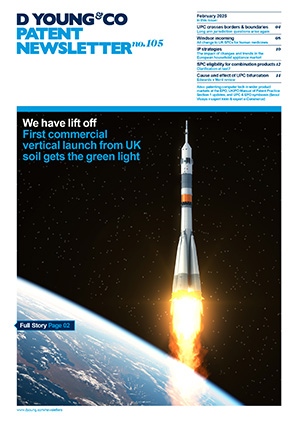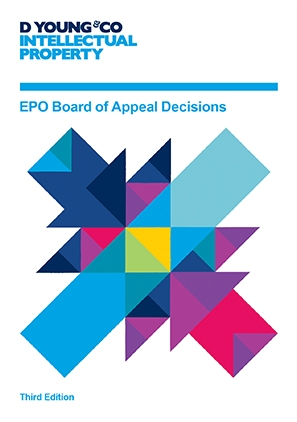Battery technology
Climate change is a critical issue which has attracted significant global attention and which poses a serious threat to society. However, with new challenges come new opportunities. In recent years, some of the world’s biggest technology companies have focused their research and development machines on the area of green technology – a vital component in the fight against climate change. From amongst these green technologies, it has been identified that batteries and electricity storage technologies may hold the key to a greener and more sustainable future. Accordingly, the European Patent Office (EPO) and the International Energy Agency (IEA) have joined forces and developed a joint study of patent innovation in batteries and electricity storage.
The report from this study, titled “Innovation in batteries and electricity storage - a global analysis based on patent data”, highlights the rise in patenting activity in the area of batteries and electricity storage. Furthermore, the report outlines a number of key areas for future innovation.
In this article, we take a look at the key findings described within the report. Furthermore, we consider the implications of the report for applicants who are looking to obtain patent protection for new inventions in the field of batteries and electricity storage technology.
Rise of patent filings
The report identifies that patent filings in the field of batteries and electricity storage have rapidly increased within the past ten years (2008 to 2018). Indeed, when it comes to innovations in areas of batteries and electricity storage, an average annual growth rate in patent filings of 14% has been observed over the past ten years. In comparison, the average annual growth rate in patent filings across all fields of technology over this same period is 3.5%. As such, it is clear that patenting activity in the area of batteries and electricity storage is rapidly increasing – and shows no serious sign of abating.
In fact, more than 7,000 international patent families related to electricity storage were published in 2018, up from 1,029 international patent families in 2000.
The rapid increase in patenting activity in the areas of batteries and electricity storage ramps up the pressure on certain parts of the patent system. With an increase in patent filing, there is increased demand for patent searches and examination. Nevertheless, with the development of this joint study with the IEA, it is clear that this is an issue which patent offices such as the EPO are prepared to tackle.
As previously discussed, the global issue of climate change is responsible, in part, for the rise of patenting activity in areas of green technology. However, the report highlights that there are a number of key issues which have led to the specific rise of patenting activity for the areas of batteries and electricity storage.
Firstly, the report confirms that global energy storage and energy storage technology is currently not on track to achieve the levels that are called for in the Sustainable Development Scenario of the IEA’s projections for the future of global energy. The Sustainable Development Scenario calls for certain actions that are required in order to reduce CO2 emissions, whilst also tackling air pollution and achieving universal energy access – amongst other goals. Indeed, the IEA’s Sustainable Development Scenario calls for close to 10,000 gigawatt-hours of batteries and other storage technology across the energy system worldwide by 2040-2050. This is approximately 50 times the size of the current energy storage capacity. Moreover, batteries currently account for less than 3% of global electrical storage (with pumped storage hydropower accounting for over 90%). Batteries therefore offer significant potential for growth when expanding the global energy storage capacity. Furthermore, beyond 2030, the report identifies that new technologies will be needed to follow the cost and performance trajectories set out in the Sustainable Development Scenario.
Secondly, the report identifies that while the average increase in patenting activity in the areas of batteries and electricity storage have been high, there have been a number of periods where the increase in certain areas – such as innovation at the level of battery cells – has stagnated (for example, between 2014 and 2017). The more recent rapid acceleration in patent filings in this area is testament also to the increasing range of applications of modern batteries and electricity storage technology. Indeed, patents for battery-related inventions targeting electric vehicles overtook those for consumer electronics in 2011.
Evidently, exciting new business opportunities will arise as the range of application of batteries and electricity storage technology further increases. The number of patent filings in these areas of technology is therefore likely set to follow suit in the coming years.
Areas of patenting activity
Amongst the patent filings related to batteries and electricity storage, electrochemical inventions account for approximately 88% of all patenting activity. Electrical solutions to the demands of electrical storage account for a further 9% of the patenting activity in this area.
In particular, lithium-ion (Li-ion) technology is currently the dominant technology for portable electronics and electric vehicles. Indeed, the report notes that Li-ion technology has been fuelling innovation in battery technology since 2005 and accounts for the largest single proportion of this technology (45% of patenting activity related to battery cells relates to Li-ion technology).
However, the report identifies that new technology will also be required to address certain limitations of Li-ion technology.
In particular, energy density of electrical storage is important for consumer devices (such as portable electronics and the like). However, the requirement for high energy density is even more important still for electrical vehicles, and is in fact seen as a limiting factor in the development of electrical vehicles. New technological developments that can increase the energy density of Li-ion storage technology will be required. Furthermore, the report identifies the limitations of the current ability to recycle and reuse Li-ion batteries. The need to develop reuse and recycling technologies will be more keenly felt as the number of electrical vehicles and storage systems continue to increase.
Redox flow and super capacitors are identified in the report as emerging electricity storage technologies that could have the potential to address a number of apparent weaknesses found in the Li-ion batteries. These technologies may provide substantial improvements in safety. Moreover, these technologies may address more specific requirements of electrical vehicles (such as faster charging). It will be interesting to see how the levels of patenting activity in these emerging electricity storage technologies develops in the near future.
Of course, areas of patenting activity are not only limited to developments in battery technology itself.
Improvements in energy management technology are required in order to compensate for the inherent supply variability of renewable energy sources (for example, solar power and wind power). Otherwise, peak demand could overwhelm supply in periods where the amount of energy supplied by these renewable energy sources is lower.
Smart charging and vehicle-to-grid solutions may help with energy management, yet have the downside that they may negatively affect battery lifetimes and performance. Accordingly, battery management systems will also play an essential role in any future developments.
As such, while Li-ion technology is the dominant technology that has been fuelling innovation in batteries and electricity storage technology in recent years, it is clear that there are a wide range of new areas of technology ripe for innovation.
Key developers of new technology
The report identifies that development in battery technology is strongly dominated by applicants in Asia, with Japanese companies at the forefront. Indeed, the report recognises that Asian companies account for nine of the top ten global applicants for international patent filings related to batteries- including a number of technology giants such as Samsung [KR], Panasonic [JP], LG Electronics [KR], Toyota [JP] and Sony [JP].
A number of these contributors (such as Panasonic and Sony) are recognised as long-established leaders in the field. Other prominent applicants are identified as having more recently ramped up their levels of patent filings in this area of technology (including LG Electronics and Toyota). Some of this expansion coincides with the increase in the range of application of batteries and electrical storage technology.
Furthermore, the report highlights that the top 25 applicants account for approximately 47% of all international patent filings related to batteries since 2000. This percentage contribution of the top 25 applicants has even increased slightly over the past five years. However, the cumulative share of the top ten applicants has fallen a little over this period.
Accordingly, with the recent growth in patenting activity in this area from applicants (such as LG Electronics and Toyota) and the apparent diversification of contribution (with a small decrease in the percentage contribution of the top ten applicants) the report suggests that the market for batteries and electricity storage is still growing, and that opportunities for new development are still available.
Conclusion
From the report, it is clear that a number of environmental and technological pressures have led to rapid growth of patent filings in batteries and electricity storage areas of technology. There are no signs of this growth abating – with a number of new opportunities for further development being identified within the report.
In fact, the report (produced jointly with the IEA) serves as a statement of intent from the EPO of their commitment to support innovation in areas of green tech such as batteries and electricity storage.
Accordingly, we believe the report will be met with keen interest by applicants who are looking to capitalise on the vast opportunities presented by the area of batteries and electricity storage technology, and who are looking to establish themselves as leaders in this exciting and rapidly developing field.


